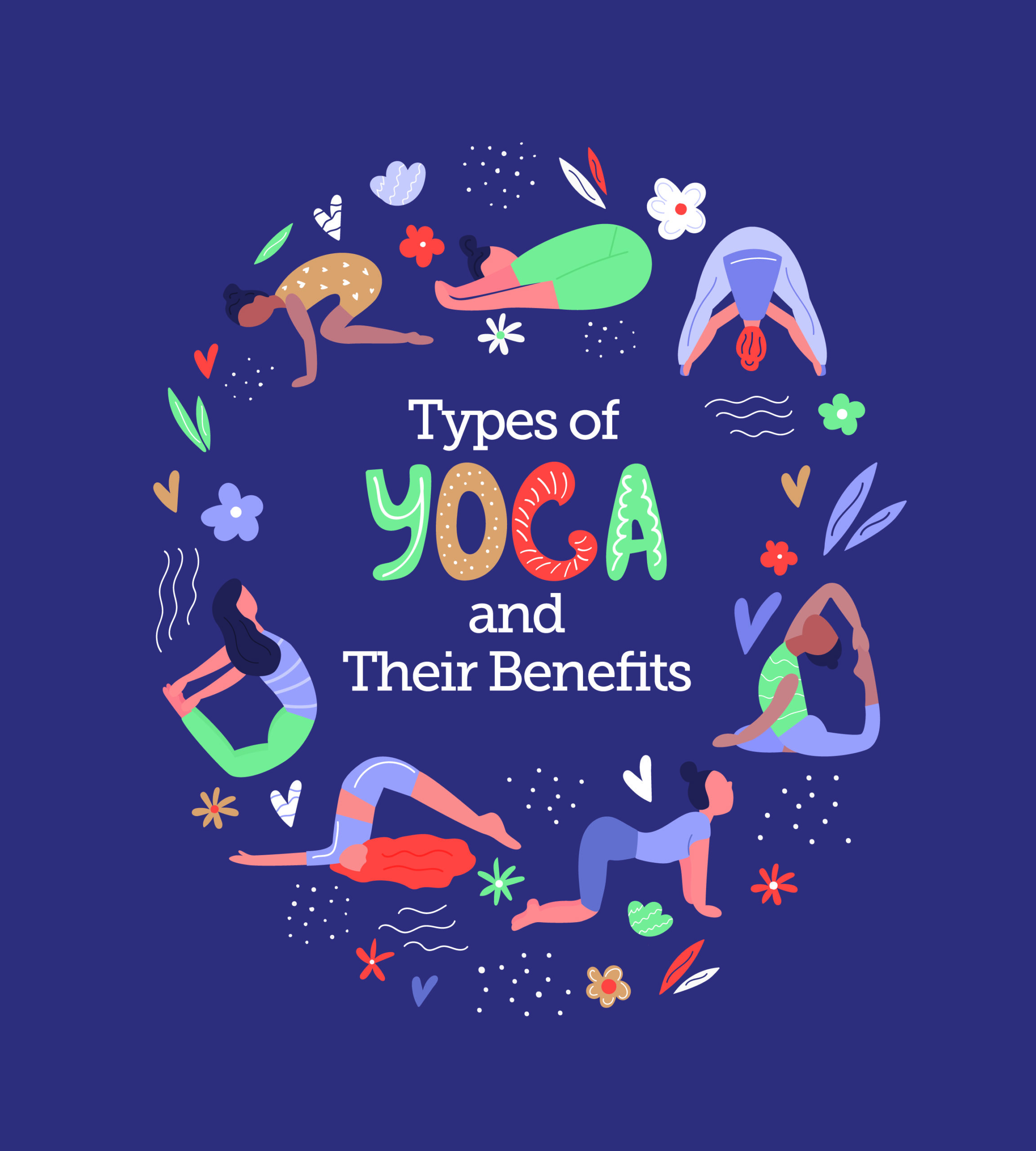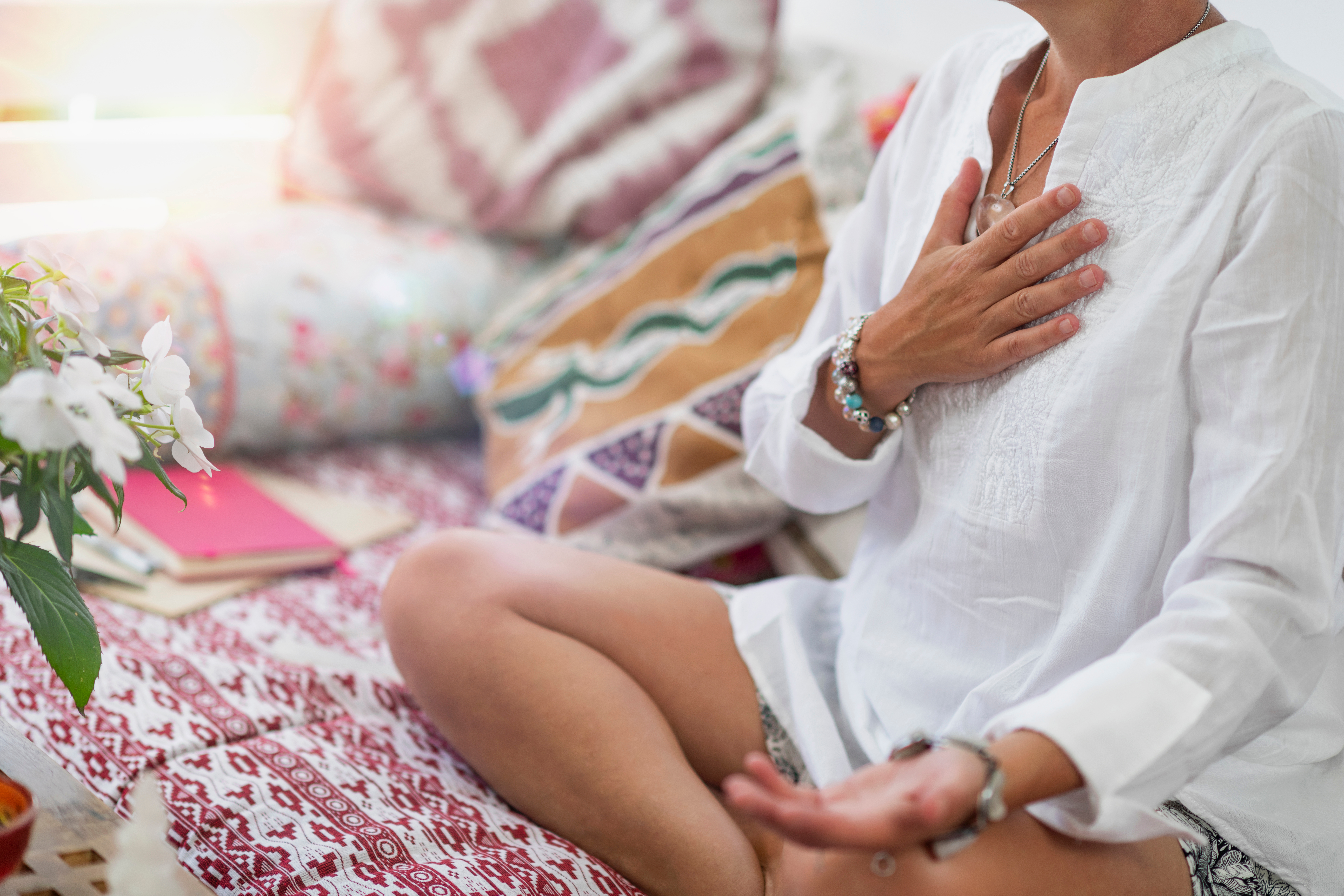by Elizabeth Rossbach
Yoga is an ancient meditative practice that has become increasingly popular today as a form of stress-relieving exercise. It can be done in a relatively small space and requires little equipment. Most people have heard of yoga’s positive impact on both physical and mental health. According to Harvard Health, yoga not only helps with increased flexibility, balance and strength; it has also been shown to reduce anxiety and help cope with depression. Many people do not realize that various types of yoga offer an array of physical and mental health benefits. Yoga can vary from fast-paced strenuous movements to slow and gentle. Each having its own way of improving physical and mental health. This article will explore some of the types of yoga and their benefits. Each yoga style is unique, and it might take some trial and error to discover which type is best for you. Hopefully, this article will be a good place to start in helping you determine which type of yoga will suit you best.
Vinyasa: This type is composed of choreographed flows. Flows are a sequence of yoga postures that flow from one to the next. These fluid poses require the person to coordinate their movement with their breath. The person must remain conscious of their breathing as they move from one posture to the next. Besides the general mental and physical health benefits of yoga mentioned earlier, Vinyasa focuses on increasing your heart rate to improve endurance and balance. The continuous movement from one pose to the next can be great for reducing anxiety in overactive minds by giving them something to focus on, allowing them to relax.
Ashtanga: Like Vinyasa yoga, Astanga incorporates a series of poses into consistent flowing movements. However, unlike Vinyasa, Ashtanga is a set sequence of poses that are performed in each session. This form of yoga is excellent for building core strength and toning muscles while offering many of the same benefits as Vinyasa yoga but with more structure.
Hatha: Hatha is one of the oldest and most popular yoga styles and focuses heavily on the breath. It concentrates on maintaining a healthy mind, body and spirit. Unlike the previous two types of yoga where movement is constant, those who practice Hatha yoga often find themselves in static poses. In holding these poses for more extended periods, Hatha yoga places a strong emphasis on paying careful attention to each individual pose. This helps a person become conscious of what part of their body is being used in each pose, creating greater awareness of the self and the connection between mind and body. Becoming more aware of this connection and focusing on your breath can help one feel more grounded when feeling overwhelmed and reducing stress.
Anusara: This is a modern Hatha style that was created by John Friend in 1997. It has become extremely popular in the United States. Anusara blends focus on the body’s structural alignment through yoga postures with balance and Hindu philosophy. While practicing Anusara, people become more aware of how the different parts of their bodies are internally connected and how energy flows throughout their bodies. As far as physical health, Anusara can help improve lung capacity and circulation. Its diverse flowing nature makes it another good choice for reducing anxiety in people who have trouble letting go of their thoughts and relaxing.
Bikram: This form of yoga was created by Bikram Choudhury and branches off from Hatha yoga. This more narrowly structured form of yoga consists of two breathing lessons and only 26 poses. However, what sets Bikram apart from other yoga types is that it is practiced in a heated room. Often called hot yoga, Bikram focuses on increasing your heart rate and blood circulation while sharpening your mental focus. If you find discipline and structure in your workout routine more centering, then Bikram might be for you. The 26 postures and two breathing exercises must be completed within the 90-minute time frame, and the room must be heated to at least 100 degrees Fahrenheit to allow the body to stretch and detoxify. This high level of heat can also help reduce pain in achy joints.
Kundalini: This is an ancient form of yoga that has been practiced since around 500 BC and was introduced to the Western world in 1969 by Yogi Bhajan. Kundalini’s name means “coiled” and refers to the metaphor used in this practice of a coiled snake at the base of one’s spine. The purpose of this practice is to slowly uncoil the snake and release one’s inner energy so it can be channeled upward through the chakras. This is done through movement poses, dynamic breathing techniques, meditation, and chanting mantras.
Mantra: This type of yoga focuses strongly on chanting mantras and meditation. This more restorative form of yoga is excellent for creating clarity and calm through repetitive vocalizations that create positive vibrations in the body. Mantra yoga is meant to engage the mind and deepen meditation. If you are looking for a form of yoga that focuses mainly on relieving stress and strengthening mental health than on physical activity, Mantra yoga may be the choice for you.
Jnana: This is a meditative type of yoga and focuses on a single question of self-inquiry. The name Jnana is Sanskrit for “knowledge” or “wisdom” and is one of the classical schools of yoga. Jnana is more about discovering the self and works to weed out outside distractions. Hopefully, this list has provided you with a good foundation for choosing the type of yoga best suited for you. Remember, it is important to consider your physical and mental needs when searching for your perfect yoga fit. Also, you do not have to stick with a single style of yoga. You can alternate types depending on your needs each day.








Leave A Comment